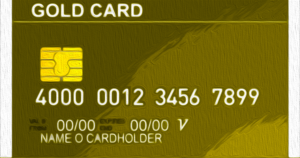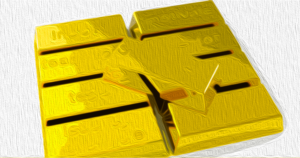
Georgetown Professor's Letter to SEC
A finance professor at Georgetown University, James Angel, has written a letter to the U.S. Securities and Exchange Commission (SEC) regarding spot bitcoin exchange-traded funds (ETFs). Professor Angel specializes in the market structure and regulation of global financial markets and has urged the SEC to avoid micromanaging the creation/redemption process for spot bitcoin ETFs.
In his letter, Professor Angel expressed concern about the SEC considering only cash creation/redemption. He argued that this would limit the freedom of issuers and authorized participants (APs) to choose whether to create/redeem in-kind. He believes that this restriction would impose costly frictions on the process, resulting in wider bid-ask spreads and mispricing of the ETF relative to the spot price. This, in turn, would lead to higher costs and mispricing risk for investors.
The Benefits of In-Kind Creation/Redemption
Professor Angel explained that in-kind creation/redemption eliminates trading costs and execution risks for the ETF. With cash creation/redemption, the ETF and its shareholders would bear the transaction costs of buying and selling bitcoin. These costs include the bid-ask spread and the operational costs involved in calculating, executing, monitoring, and accounting for transactions in the bitcoin markets. By allowing in-kind creation/redemption, the ETF shareholders would benefit from lower costs and avoid the execution risk associated with timing and bitcoin price volatility.
Let ETF Sponsors Decide
The professor emphasized that the SEC should listen to the ETF sponsors who have decades of hands-on experience with creating and redeeming ETFs. He believes that ETF sponsors should have the freedom to accept bitcoin directly and that the SEC should not micromanage the creation/redemption process. Instead, it should be left to the professional judgment of the ETF sponsors.
Professor Angel cited Blackrock and Fidelity, two major financial institutions, which have advocated for the in-kind model. They argue that this model offers lower transaction costs, resistance to market manipulation, reduction in operating event risks, and simplicity. Blackrock has proposed a revised in-kind model for its spot bitcoin ETF.
The Professor's Conclusion
In conclusion, Professor Angel urged the SEC not to squander the positive development of allowing spot bitcoin ETFs to trade in the U.S. by forcing a suboptimal product with cash-only creation/redemption to come to market. He believes that the SEC should consider the advantages of the in-kind model and the expertise of ETF sponsors in making its decision.
What are your thoughts on this issue? Share your opinions in the comments section below.
Frequently Asked Questions
What precious metals do you have that you can invest in for your retirement?
The best precious metal investments are gold and silver. They are both simple to purchase and sell, and they have been around for a long time. If you want to diversify your portfolio, you should consider adding them to your list.
Gold: Gold is one of man's oldest forms of currency. It is very stable and secure. Because of this, it's considered a good way to preserve wealth during times of uncertainty.
Silver: Silver has always been popular among investors. It's an ideal choice for those who prefer to avoid volatility. Silver is more volatile than gold. It tends to rise rather than fall.
Platinium: Platinum is another form of precious metal that's becoming increasingly popular. It's like silver or gold in that it is durable and resistant to corrosion. It's however much more costly than any of its counterparts.
Rhodium. Rhodium is used as a catalyst. It is also used in jewelry-making. And, it's relatively cheap compared to other types of precious metals.
Palladium: Palladium is similar to platinum, but it's less rare. It's also less expensive. It is a preferred choice among investors who are looking to add precious materials to their portfolios.
What are the advantages of a gold IRA
The best way to save money for retirement is to place it in an Individual Retirement Account. It's not subject to tax until you withdraw it. You have total control over how much each year you take out. There are many types and types of IRAs. Some are more suitable for students who wish to save money for college. Some are better suited for investors who want higher returns. Roth IRAs permit individuals to contribute after the age 59 1/2. Any earnings earned at retirement are subject to tax. Once they start withdrawing money, however, the earnings aren’t subject to tax again. So if you're planning to retire early, this type of account may make sense.
A gold IRA is similar to other IRAs because it allows you to invest money in various asset classes. Unlike a regular IRA where you pay taxes on gains, a gold IRA doesn't require you to worry about taxation while you wait to get them. For people who would rather invest than spend their money, gold IRA accounts are a good option.
Another advantage to owning gold via an IRA is the ease of automatic withdraws. You won't have the hassle of making deposits each month. To make sure you don't miss any payments, you can also set up direct deductions.
Finally, gold is one of the safest investment choices available today. It is not tied to any country so its value tends stay steady. Even in times of economic turmoil, gold prices tend not to fluctuate. This makes it a great investment option to protect your savings from inflation.
What amount should I invest in my Roth IRA?
Roth IRAs are retirement accounts where you deposit your own money tax-free. The account cannot be withdrawn from until you are 59 1/2. You must adhere to certain rules if you are going to withdraw any of your contributions prior. You cannot touch your principal (the amount you originally deposited). This means that you can't take out more money than you originally contributed. If you decide to withdraw more money than what you contributed initially, you will need to pay taxes.
The second rule states that income taxes must be paid before you can withdraw earnings. So, when you withdraw, you'll pay taxes on those earnings. Consider, for instance, that you contribute $5,000 per year to your Roth IRA. Let's also say that you earn $10,000 per annum after contributing. The federal income tax on your earnings would amount to $3,500. You would have $6,500 less. You can only take out what you originally contributed.
Therefore, even if you take $4,000 out of your earnings you still owe taxes on $1,500. You'd also lose half the earnings that you took out, as they would be subject to a second 50% tax (half of 40%). So even though your Roth IRA ended up having $7,000, you only got $4,000.
Two types of Roth IRAs are available: Roth and traditional. A traditional IRA allows for you to deduct pretax contributions of your taxable income. Your traditional IRA allows you to withdraw your entire contribution plus any interest. You can withdraw as much as you want from a traditional IRA.
A Roth IRA doesn't allow you to deduct your contributions. However, once you retire, you can withdraw your entire contribution plus accrued interest. There is no minimum withdrawal required, unlike a traditional IRA. Your contribution can be withdrawn at any age, not just when you reach 70 1/2.
What are the pros and cons of a gold IRA?
An Individual Retirement account (IRA) is a better option than regular savings accounts in that interest earned is exempted from tax. An IRA is a good choice for those who want a way to save some money but don’t want the tax. However, there are disadvantages to this type investment.
You could lose all of your accumulated money if you take out too much from your IRA. Also, the IRS may not allow you to make withdrawals from your IRA until you're 59 1/2 years old. If you do withdraw funds, you'll need to pay a penalty.
Another problem is the cost of managing your IRA. Many banks charge between 0.5%-2.0% per year. Other providers may charge monthly management fees, ranging between $10 and $50.
If you prefer to keep your money outside a bank, you'll need to purchase insurance. A majority of insurance companies require that you possess a minimum amount gold to be eligible for a claim. Insurance that covers losses upto $500,000.
If you decide to open a gold IRA, it is important to know how much you can use. You may be limited in the amount of gold you can have by some providers. Others allow you the freedom to choose your own weight.
It is also up to you to decide whether you want to purchase physical gold or futures. The price of physical gold is higher than that of gold futures. Futures contracts provide flexibility for purchasing gold. You can set up futures contracts with a fixed expiration date.
You will also have to decide which type of insurance coverage is best for you. The standard policy doesn't include theft protection or loss due to fire, flood, or earthquake. It does provide coverage for damage from natural disasters, however. If you live in a high-risk area, you may want to add additional coverage.
You should also consider the cost of storage for your gold. Storage costs are not covered by insurance. Additionally, safekeeping is usually charged by banks at around $25-$40 per monthly.
To open a IRA in gold, you will need to first speak with a qualified custodian. A custodian helps you keep track of your investments, and ensures compliance with federal regulations. Custodians can't sell assets. Instead, they must hold them as long as you request.
Once you have chosen the right type of IRA to suit your needs, it is time to fill out paperwork defining your goals. Your plan should include information about the investments you want to make, such as stocks, bonds, mutual funds, or real estate. You should also specify how much you want to invest each month.
Once you have completed the forms, you will need to mail them to your provider with a check and a small deposit. After receiving your application, the company will review it and mail you a confirmation letter.
You should consult a financial planner before opening a Gold IRA. Financial planners are experts at investing and can help you determine which type of IRA is best for you. You can also reduce your insurance costs by working with them to find lower-cost alternatives.
Can the government take your gold
The government cannot take your gold because you own it. It's yours, and you earned it by working hard. It belongs entirely to you. But, this rule is not universal. You can lose your gold if you have been convicted for fraud against the federal governments. Your precious metals can also be lost if you owe tax to the IRS. However, even though your taxes have not been paid, you can still keep your precious metals, even though they are considered the property of United States Government.
How Much of Your IRA Should Be Made Up Of Precious Metals
The most important thing you should know when investing in precious metals is that they are not just for wealthy people. You don't have to be rich to invest in them. There are many methods to make money off of silver and gold investments.
You could also consider buying physical coins like bullion bars, rounds or bullion bars. Stocks in companies that produce precious materials could be purchased. Your retirement plan provider may offer an IRA rollingover program.
You can still get benefits from precious metals regardless of what choice you make. Even though they aren't stocks, they still offer the possibility of long-term growth.
Their prices rise with time, which is a different to traditional investments. If you decide to make a sale of your investment in the future, you will likely realize more profit than with traditional investments.
Statistics
- Instead, the economy improved, stocks rebounded, and gold plunged, losing 28 percent of its value in 2013. (aarp.org)
- Contribution limits$6,000 (49 and under) $7,000 (50 and up)$6,000 (49 and under) $7,000 (50 and up)$58,000 or 25% of your annual compensation (whichever is smaller) (lendedu.com)
- You can only purchase gold bars at least 99.5% purity. (forbes.com)
- The price of gold jumped 131 percent from late 2007 to September 2011, when it hit a high of $1,921 an ounce, according to the World Gold Council. (aarp.org)
- This is a 15% margin that has shown no stable direction of growth but fluctuates seemingly at random. (smartasset.com)
External Links
wsj.com
- Saddam Hussein's InvasionHelped Uncage a Bear In 1991 – WSJ
- Are you interested in keeping gold in your IRA at-home? It's not legal – WSJ
finance.yahoo.com
forbes.com
- Gold IRA: Add some sparkle to your retirement nest egg
- Understanding China's Evergrande Crisis – Forbes Advisor
irs.gov
How To
A growing trend: Gold IRAs
Investors are increasingly turning to gold IRAs as a way to diversify and protect their portfolios from inflation.
The gold IRA allows investors to purchase physical gold bars and bullion. It can be used for tax-free growth and provides an alternative investment option for those concerned about stocks and bonds.
Investors can manage their assets with a gold IRA without worrying about market volatility. Investors can protect themselves from inflation and other possible problems by using the gold IRA.
Investors also benefit from physical gold's unique properties, such as durability and portability.
Additional benefits of the gold IRA include the ability to quickly pass ownership to heirs. Additionally, the IRS does not consider gold a money or a commodity.
This is why the gold IRA has become increasingly popular with investors looking to provide financial security during times of financial uncertainty.
—————————————————————————————————————————————————————————————-
By: Kevin Helms
Title: Georgetown Professor Urges SEC to Let Spot Bitcoin ETFs Use In-Kind Creation Method
Sourced From: news.bitcoin.com/finance-professor-blasts-secs-potential-cash-only-rule-for-spot-bitcoin-etfs-citing-benefits-of-in-kind-model/
Published Date: Sat, 16 Dec 2023 02:30:30 +0000
Related posts:
 SEC’s Spot Bitcoin ETF Advice Fuels Hope for Approval — Crypto Industry Views It as ‘Real Progress’
SEC’s Spot Bitcoin ETF Advice Fuels Hope for Approval — Crypto Industry Views It as ‘Real Progress’
 Blackrock Outlines Why SEC ‘Must’ Approve Spot Ethereum ETFs
Blackrock Outlines Why SEC ‘Must’ Approve Spot Ethereum ETFs
 Predictions of Bitcoin and World Markets at the Upcoming FOMC Meeting
Predictions of Bitcoin and World Markets at the Upcoming FOMC Meeting
 SEC Misses Appeal Window against Grayscale’s Spot Bitcoin ETF Decision
SEC Misses Appeal Window against Grayscale’s Spot Bitcoin ETF Decision














